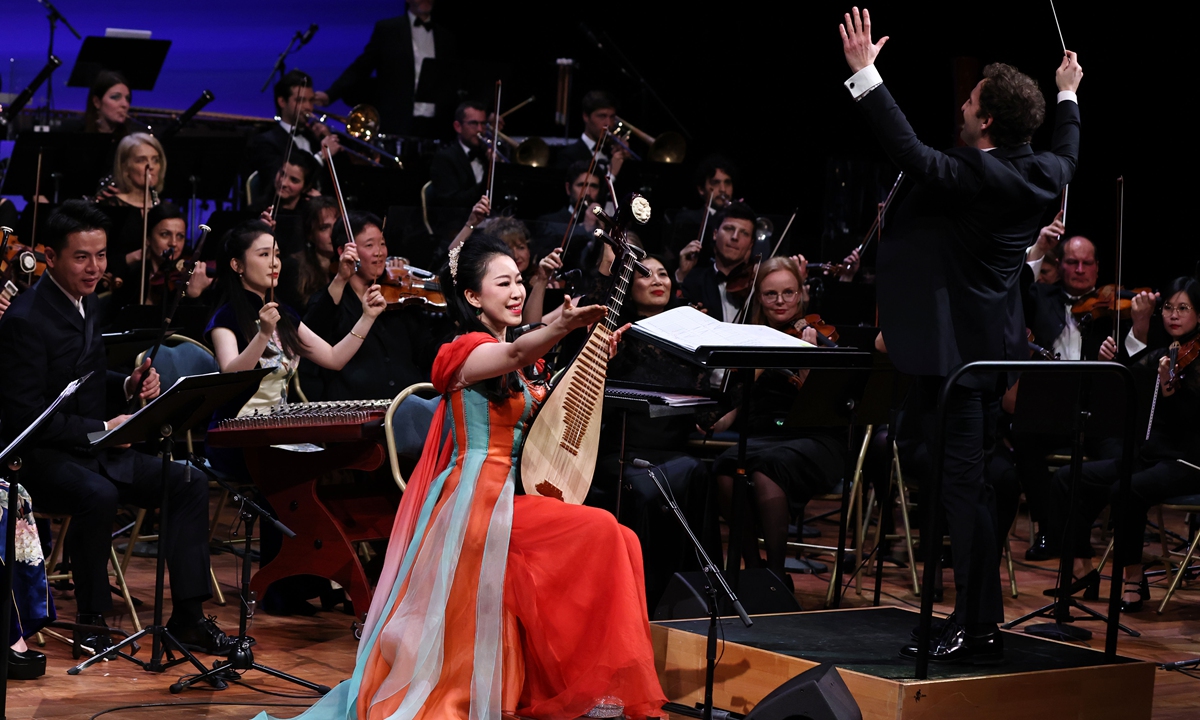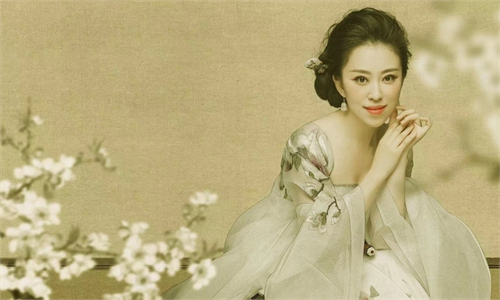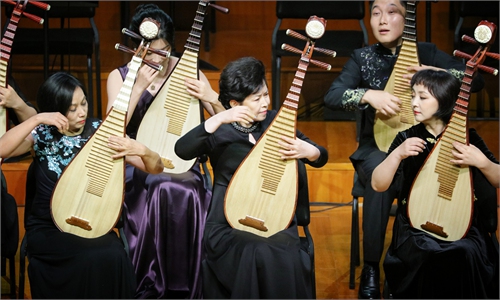ARTS / ART
Orchestras take stage to celebrate friendship
Musicians hold events to mark 60 years of ties between China and France

Chinese pipa artist Zhao Cong (front) performs with the Royal Opera of Versailles Orchestra during a concert in Paris on January 31, 2024 to celebrate the China-France Year of Culture and Tourism and the 60th anniversary of the establishment of diplomatic relations between China and France. Photo: Courtesy of the China National Traditional Orchestra
What a wonderful night! The audiences must have been marveled by the chemistry of traditional Chinese musical instruments erhu, pipa and flute meeting their Western counterparts the cello and piano as musicians from the China National Traditional Orchestra and the Royal Opera of Versailles Orchestra staged a concert in Paris on Wednesday night.They shared the stage to perform a harmonious symphony featuring music pieces from both countries in an innovative way to launch the 2024 China-France Year of Culture and Tourism and mark the 60th anniversary of the establishment of diplomatic relations between China and France.
The playlist combined classical and innovative pieces with Chinese and French music characteristics, reflecting the integration and mutual learning between the two civilizations.
Traditional Chinese musical instruments and the symphony orchestra performed on the same stage, producing a new chapter for "harmonious dialogue among civilizations."
"It is the power of music and culture that can transcend differences in language, culture and geographic location," Zhao Cong, head of China National Traditional Orchestra, told the Global Times on Thursday.
"Such a musical dialogue opens the China-France Year of Culture and Tourism, and remembers the friendship between China and France over the past 60 years. We look forward to a bright future for China and France in the next jiazi [the 60-year cycle in the Chinese calendar]."
As one of the most outstanding pipa performers in China, Zhao performed her signature piece with the four-string plucked lute, "The Flying Apsaras along the Silk Road," which draws inspiration from the essence of traditional Chinese music as well as Dunhuang art.
The Flying Apsaras, an embodiment of Gandharva, the God of holy songs and dances, and Kimnara, the God of entertainment, are scattered around all the 500 grottoes of the Mogao Caves in Dunhuang, Northwest China's Gansu Province.
Without wings or feathers, the gods fly in the sky with the support of floating cloth and colored ribbons instead of clouds and wings.
With a variety of innovative pipa playing techniques, Zhao incorporated contemporary interpretations, vividly depicting the soul of music thousands of years ago.
Her score was accompanied by the China National Traditional Orchestra and the Royal Opera of Versailles Orchestra.
Under the baton of French conductor Victor Jacob, Chinese erhu musician Tang Feng and French flute player Khrystyna Sarksyan together presented the "Cloud Dance," which symbolizes the exchanges of different romantic styles between China's scholars and French literati.
"It presented the close and harmonious relationship between the music of the two countries," added Zhao.
Chinese national instruments are open and inclusive, and share the same origins with many Western musical instruments, according to Zhao.
"It is the best example of the core value of Chinese culture - harmony through dialogue between the Chinese and French instruments. Civilizations are colorful because of communication, and civilizations are enriched by mutual learning," she said.
Hundreds of cultural and people-to-people exchanges between China and France will be held in 2024 during the China-France Year of Culture and Tourism.
A series of activities covering performing arts, visual arts, cultural heritage, and tourism promotion among others will be held, including a fashion show and an exhibition featuring China's Forbidden City and France's Palace of Versailles.



